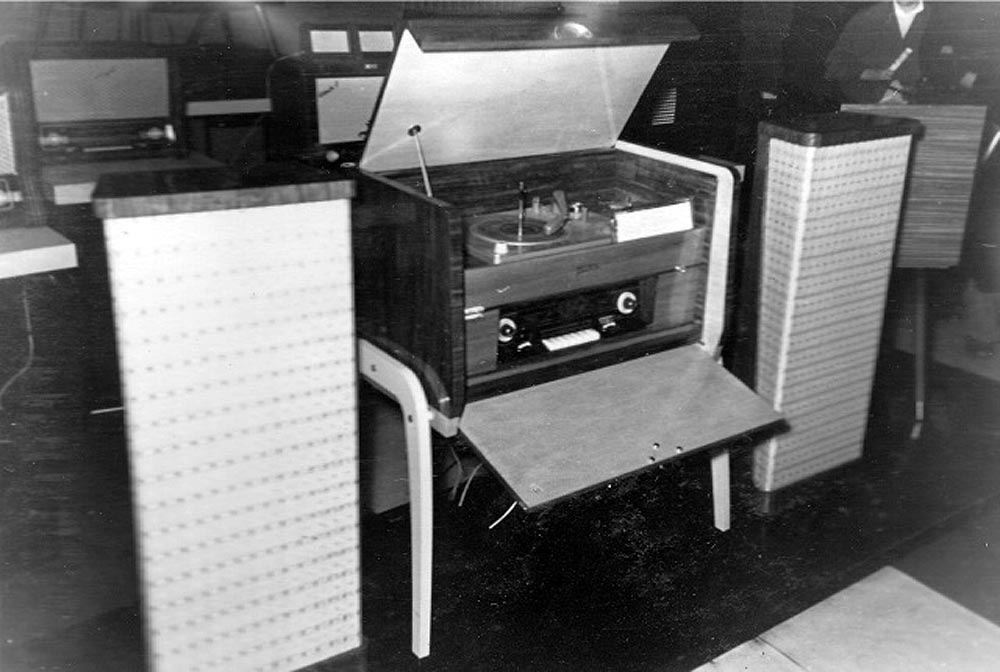Radiola network tube stereophonic "Teika".
Network tube radiosDomesticIn 1959, the radio network tube stereophonic "Teika" was developed by the AS Popov Riga Radio Engineering Plant. Radiola "Teika" makes it possible to receive radio broadcasting stations operating in the ranges of DV, SV, HF and VHF and to play gramophone records with normal and stereophonic recordings. The radio receiver is partially printed wiring. The two-channel amplifier of the low-frequency radio is combined when the "mono" key is pressed. When you press the "stereo" key, each amplifier works on its own speaker. The radio acoustic system consists of two portable pedestals, each of which has three loudspeakers; one low-frequency 6GD-1 and two high-frequency 1GD-1. The radio's electric player has an automatic machine, which makes it possible to automatically play ten records of various diameters. The EPU machine allows you to stop playing, repeat it or start playing the next disc at any time. The machine is controlled using three keys. How many radios were produced is not established.